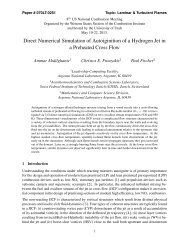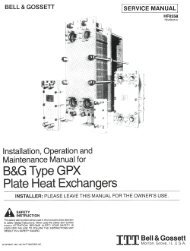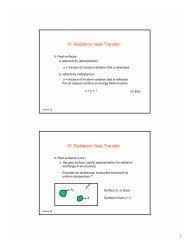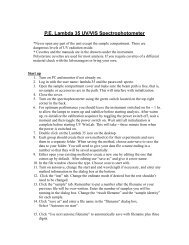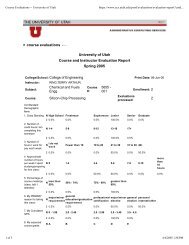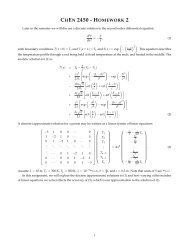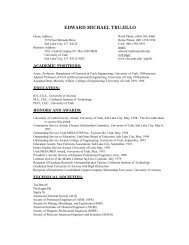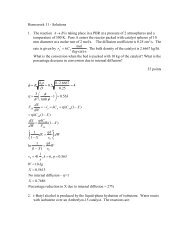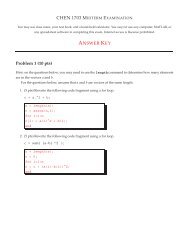Standard Operating Procedure - Ultrafiltration - Department of ...
Standard Operating Procedure - Ultrafiltration - Department of ...
Standard Operating Procedure - Ultrafiltration - Department of ...
- No tags were found...
You also want an ePaper? Increase the reach of your titles
YUMPU automatically turns print PDFs into web optimized ePapers that Google loves.
substance is not suitable on membranes. Silicates do not rinse very well, and precipitate easily,especially when pH drops into the acid range.Sodium carbonate, Soda ash or phosphates are good builders and buffer system, however caremust be taken to use well soluble material. Do not use the granular type, which might dissolvetoo slowly and get into the membrane system where it might physically damage the surface byscratching it.The curve <strong>of</strong> protein solubility suggests that the higher the pH the better the cleaning. We alsoknow that in most cases we simply cannot use pH values <strong>of</strong> 13 or more, seldom more than 12.5due to the construction <strong>of</strong> the membrane. Built products have an enormous advantage overstraight caustic. With the inclusion <strong>of</strong> various sequestrants, chelating or complexing agents intothe formula increasing detergency, a built product can allow for the reduction <strong>of</strong> pH whilemaking retention <strong>of</strong> cleaning efficiency possible. Sequestrants also, or primarily, react with theCalcium and magnesium ions present in either the soil or the hard water employed or both. Theyaid greatly in soil removal.NEUTRAL CLEANERS:Neutral cleaners are usually “enzyme cleaners.” Certain membranes, such as the CA and somesensitive composite membranes, do not support pH values higher that 7.5 or 9.5 respectively. Asthe protein solubility curve indicates, this is a bad region for efficient soil removal. In order tomake a product, which is buffered to give a pH value <strong>of</strong> 7.5, or 8 in solution do a good cleaningjob on protein, an enzyme (similar to protease <strong>of</strong> the stomach) is added.The enzyme slowly digests the protein molecules and makes them into water-soluble fragments.To speed up the action <strong>of</strong> the enzyme, one should work at the optimum pH <strong>of</strong> the enzymeactivity, which is about pH 9 (already too high to CA) and at temperature around 120° F whichmay also be too high for some membranes. One could increase the amount <strong>of</strong> enzyme in thecleaner, as more enzyme molecules will be able to do more work. This is however costly.Enzyme cleaners are not only just composed <strong>of</strong> an enzyme preparation, they have builders andbuffers, surfactants for emulsifying and dispersing soil.Depending on the type <strong>of</strong> soil, it is possible to make a neutral cleaner <strong>of</strong> quality without enzymes(a lot less expensive) if no protein is present in the soil or without surfactants when no fat ispresent. Enzymes other than proteases have not been tried on a large scale, mostly because <strong>of</strong>the cost factor involved.ACIDSAn acid cleaning step can <strong>of</strong>ten be skipped when a powerful quality cleaner has been used. It isrecommended to use acids when high amounts <strong>of</strong> mineral deposits, Calcium, Magnesium, Ironare present in the soil or in conditioning the membrane surface in the case <strong>of</strong> inorganicmembranes. A blend <strong>of</strong> acids (nitric/phosphoric/citric) correctly chosen is usually better thanstraight commodities.64



